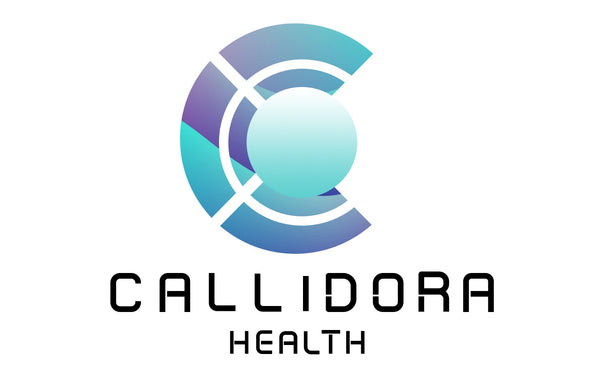In recent years, technology has dramatically transformed many aspects of healthcare, and physiotherapy is no exception. One of the most exciting innovations in the field is “Move with VR”, a virtual reality-based physiotherapy program offered by Callidora Home Physiotherapy. This cutting-edge service is designed to make rehabilitation more engaging, effective, and accessible, allowing patients to receive high-quality care from the comfort of their own homes.
So, what exactly is Move with VR and how can it benefit you? In this blog, we’ll explore how this groundbreaking program works and the many advantages it brings to physiotherapy patients of all ages and abilities.
1. Immersive and Engaging Rehabilitation
Traditional physiotherapy can sometimes feel monotonous or repetitive, especially when you're asked to perform exercises in the same environment for long periods. Move with VR, however, offers a highly immersive experience that transforms rehabilitation into an interactive and engaging process. Virtual reality creates a dynamic environment where patients can practice movements in a virtual world, whether it’s walking through a forest, climbing stairs, or even navigating obstacle courses.
The immersive nature of VR helps distract from the discomfort often associated with rehabilitation, making exercises feel more like a game than a chore. This can increase motivation, especially for individuals who may be struggling with the mental challenges of recovery.
2. Personalized Treatment Plans
One of the standout benefits of Move with VR is its ability to tailor the rehabilitation experience to each individual. Callidora Home Physiotherapy customizes the VR exercises based on a patient’s specific condition, needs, and recovery goals. Whether you’re recovering from surgery, managing chronic pain, or working on mobility after an injury, the VR program adapts to your abilities and progresses with you as you improve.
This personalized approach not only accelerates recovery but also ensures that patients stay engaged and challenged without overexerting themselves. The real-time feedback offered by VR helps physiotherapists monitor progress, adjust exercises, and ensure that each patient is receiving the right level of intensity.
3. Convenient Home-Based Physiotherapy
Another key advantage of Move with VR is its ability to bring physiotherapy to your doorstep. This is especially valuable for individuals with mobility challenges, busy schedules, or those living in remote areas who may have difficulty accessing traditional physiotherapy clinics.
With Callidora Home Physiotherapy’s VR program, you can perform your rehabilitation exercises in the comfort of your own home, with the guidance and support of a trained physiotherapist. Virtual reality also allows patients to perform exercises on their own between sessions, creating a flexible and comprehensive rehabilitation routine that fits into their lifestyle.
4. Improved Range of Motion and Mobility
Move with VR uses interactive simulations to guide patients through specific movements that help improve their range of motion, flexibility, and balance. For those recovering from surgeries like joint replacements or fractures, these exercises help gradually rebuild strength and mobility in a controlled and safe environment.
The ability to practice movements in the virtual world—whether it's reaching, stretching, bending, or walking—allows patients to regain their confidence and rebuild functional mobility in a way that might be difficult in the traditional clinic setting.
5. Pain Management and Mental Health Benefits
Chronic pain and rehabilitation can take a toll not just on the body, but also on mental health. Virtual reality has been shown to be effective in managing pain and reducing the psychological stress associated with recovery. By immersing patients in a virtual world, VR therapy distracts the brain from pain and discomfort, making exercises more tolerable and even enjoyable.
Additionally, the interactive nature of Move with VR helps improve mood and reduce anxiety, as patients are often more motivated to complete their rehabilitation when they feel like they're progressing in a fun, engaging way. As an added bonus, physical activity releases endorphins, which naturally boost mood and reduce stress levels.
6. Objective Tracking and Progress Monitoring
With traditional physiotherapy, it can sometimes be difficult to track subtle improvements, especially in areas like balance, coordination, and strength. Move with VR allows for precise monitoring of patient progress in real time. As you engage with the virtual environment, sensors track your movements, providing valuable feedback to your physiotherapist.
This objective data helps physiotherapists make informed decisions about your treatment, adjust exercises as needed, and ensure that you're progressing at the optimal pace. For patients, this also offers a clear visual representation of improvement, which can be highly motivating.
7. Suitable for All Ages and Abilities
Move with VR is not just for athletes or young, active individuals. It’s a versatile tool that can be beneficial for people of all ages, including older adults and those with disabilities. Whether you're recovering from a stroke, managing a neurological disorder like Parkinson’s disease, or working on joint mobility after surgery, VR can be adapted to your needs.
The ability to modify exercises to accommodate various physical conditions means that Move with VR is accessible to a wide range of patients, offering a customized experience that promotes recovery without overwhelming the patient.
8. Encourages Consistency and Accountability
Consistency is key in rehabilitation, and Move with VR makes it easier to stick to your treatment plan. The interactive nature of VR encourages you to complete your exercises regularly, while the engaging features help make the process more enjoyable.
Moreover, your physiotherapist can track your progress remotely, ensuring that you're staying on track and offering guidance when needed. If you’re struggling with a particular exercise, your therapist can adjust the program to better suit your current abilities or help you with technique through virtual demonstrations.
